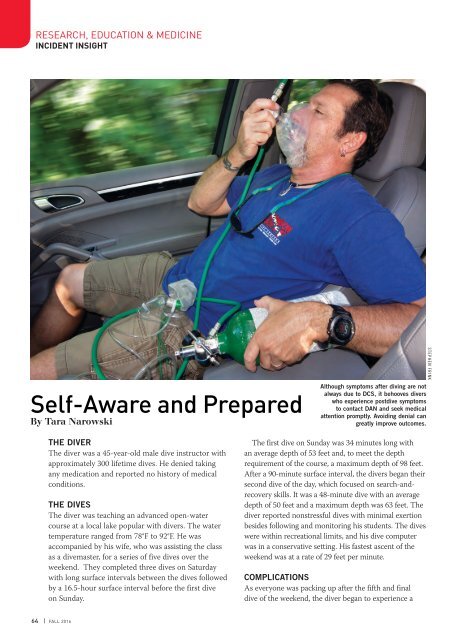AD 2016 Q4
Alert Diver is the dive industry’s leading publication. Featuring DAN’s core content of dive safety, research, education and medical information, each issue is a must-read reference, archived and shared by passionate scuba enthusiasts. In addition, Alert Diver showcases fascinating dive destinations and marine environmental topics through images from the world’s greatest underwater photographers and stories from the most experienced and eloquent dive journalists in the business.
Alert Diver is the dive industry’s leading publication. Featuring DAN’s core content of dive safety, research, education and medical information, each issue is a must-read reference, archived and shared by passionate scuba enthusiasts. In addition, Alert Diver showcases fascinating dive destinations and marine environmental topics through images from the world’s greatest underwater photographers and stories from the most experienced and eloquent dive journalists in the business.
You also want an ePaper? Increase the reach of your titles
YUMPU automatically turns print PDFs into web optimized ePapers that Google loves.
RESEARCH, EDUCATION & MEDICINE<br />
INCIDENT INSIGHT<br />
Self-Aware and Prepared<br />
By Tara Narowski<br />
Although symptoms after diving are not<br />
always due to DCS, it behooves divers<br />
who experience postdive symptoms<br />
to contact DAN and seek medical<br />
attention promptly. Avoiding denial can<br />
greatly improve outcomes.<br />
STEPHEN FRINK<br />
THE DIVER<br />
The diver was a 45-year-old male dive instructor with<br />
approximately 300 lifetime dives. He denied taking<br />
any medication and reported no history of medical<br />
conditions.<br />
THE DIVES<br />
The diver was teaching an advanced open-water<br />
course at a local lake popular with divers. The water<br />
temperature ranged from 78°F to 92°F. He was<br />
accompanied by his wife, who was assisting the class<br />
as a divemaster, for a series of five dives over the<br />
weekend. They completed three dives on Saturday<br />
with long surface intervals between the dives followed<br />
by a 16.5-hour surface interval before the first dive<br />
on Sunday.<br />
The first dive on Sunday was 34 minutes long with<br />
an average depth of 53 feet and, to meet the depth<br />
requirement of the course, a maximum depth of 98 feet.<br />
After a 90-minute surface interval, the divers began their<br />
second dive of the day, which focused on search-andrecovery<br />
skills. It was a 48-minute dive with an average<br />
depth of 50 feet and a maximum depth was 63 feet. The<br />
diver reported nonstressful dives with minimal exertion<br />
besides following and monitoring his students. The dives<br />
were within recreational limits, and his dive computer<br />
was in a conservative setting. His fastest ascent of the<br />
weekend was at a rate of 29 feet per minute.<br />
COMPLICATIONS<br />
As everyone was packing up after the fifth and final<br />
dive of the weekend, the diver began to experience a<br />
64 | FALL <strong>2016</strong>










